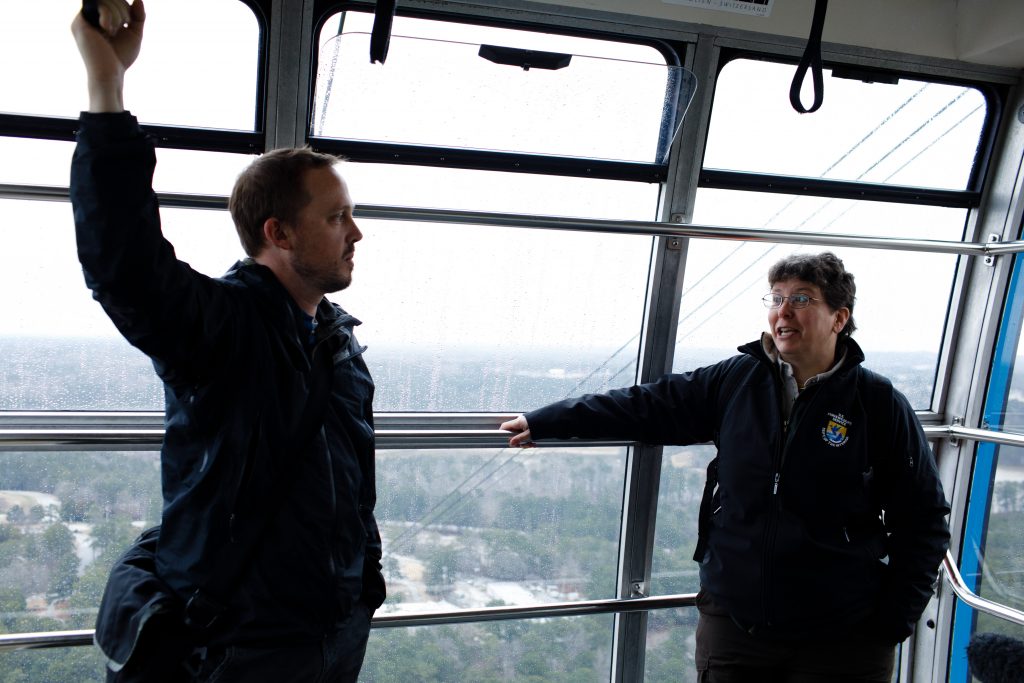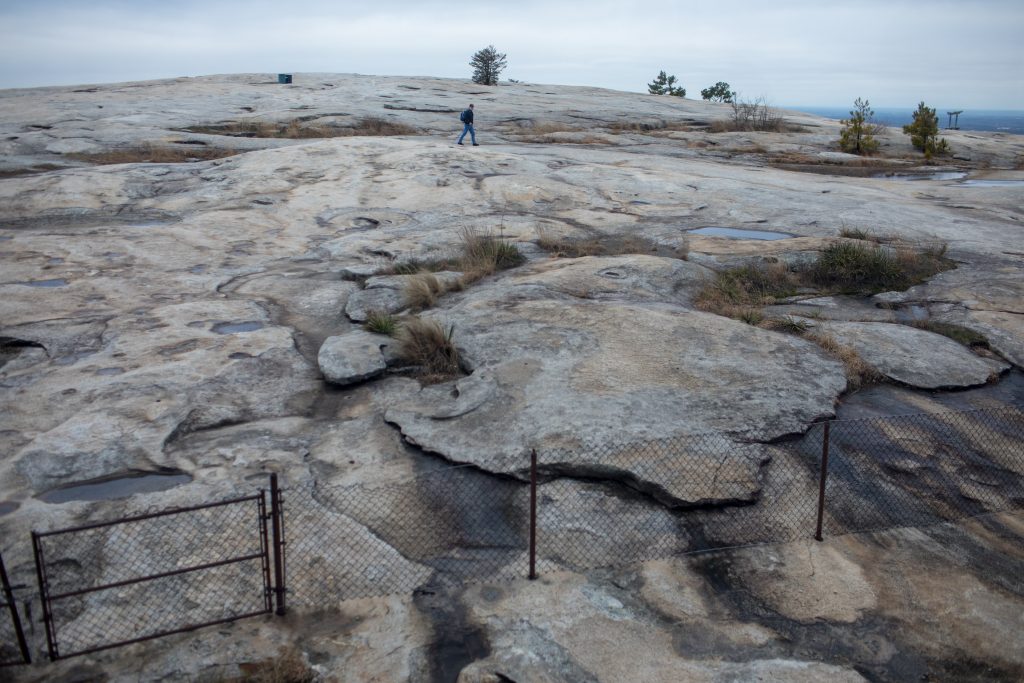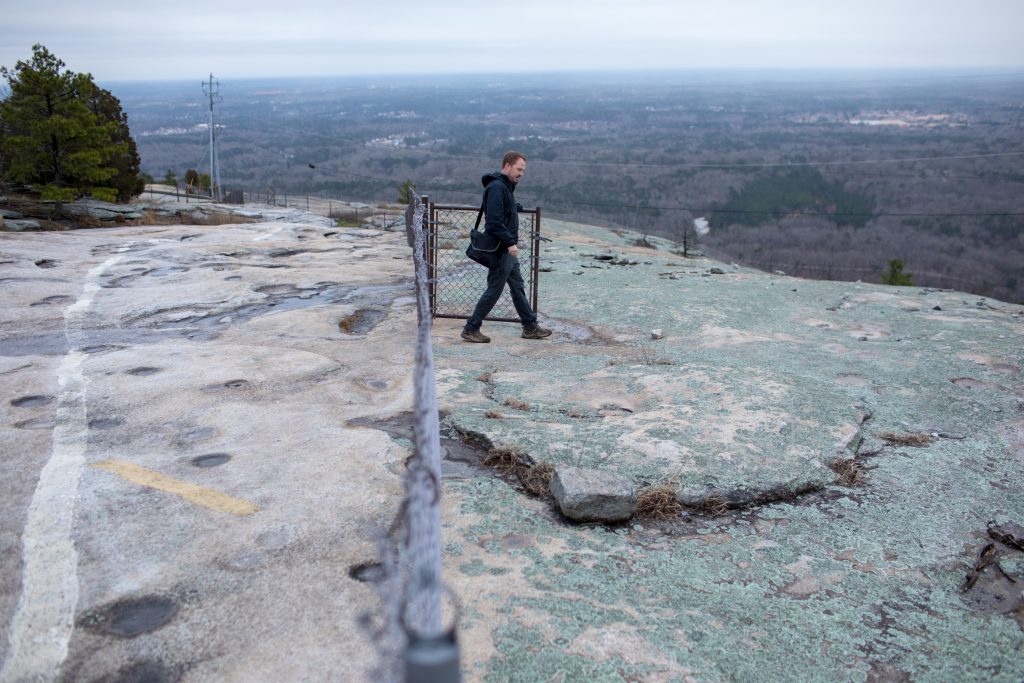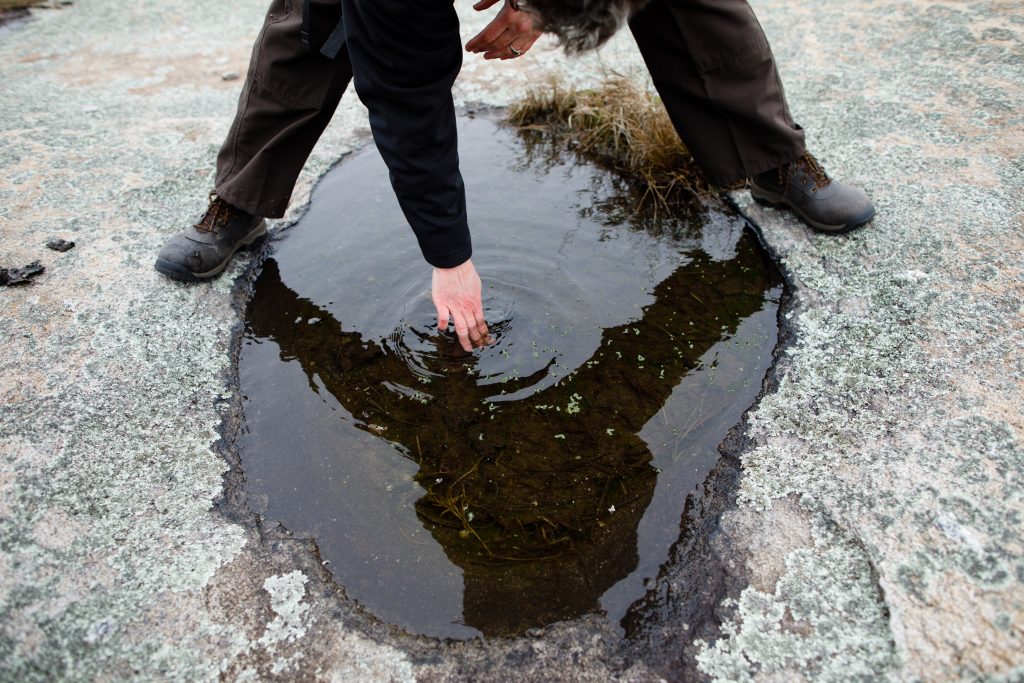On Top Of Stone Mountain, There’s A World Of Tiny Plants

The lentil-sized leaves of little amphianthus float on the surface of a pool on Stone Mountain.
Dustin Chambers / WABE
At the top of Stone Mountain most people look up and out to enjoy the sweeping views of Atlanta, but Carrie Straight and Brian McKnight look down.
Straight, a biologist with the U.S. Fish and Wildlife Service, and McKnight, a naturalist and educator with the Stone Mountain Memorial Association, are at the top of the mountain on a gray, cold and very windy winter day, checking on the tiny – and very rare – plants that grow there.


The black spored quillwort, an endangered species that grows in just a handful of places in Georgia, looks like tiny tufts of grass. It grows at the bottom of pools that form when holes and dents in the mountain collect rain water. Another plant, the little amphianthus, shoots up tiny pairs of leaves that float on the surface of the pools. That plant, which is also known as pool sprite and snorkelwort, is listed as threatened under the Endangered Species Act.

These plants grow in just a handful of places, always in pools on granite.
Straight says there aren’t that many in the world.
“The hotspot for granite outcrops is centered right here around Atlanta, so it’s kind of an important piece of this whole environment,” she says.
That includes not just the rare plants, but also a kind of spider, and a mite that looks like a piece of black pepper, clinging to the bottom of a rock.
This world on the granite is tiny, isolated and kind of strange. McKnight says Stone Mountain is like a desert island for these species. They evolved to live on it, and can’t get off of it very easily. That makes them worth protecting, he says.
“To value that thing, to value the odd and the unique,” he says.

The quillwort and little amphianthus naturally would have grown in pools all over the top of Stone Mountain, but they don’t do well where there’s much foot traffic. Before the ‘96 Olympics, groups pushed to study the plants more, knowing there’d be more foot traffic on the mountain. Now the pools where the plants live are in a fenced off area. McKnight and Straight say they’re doing better now.







